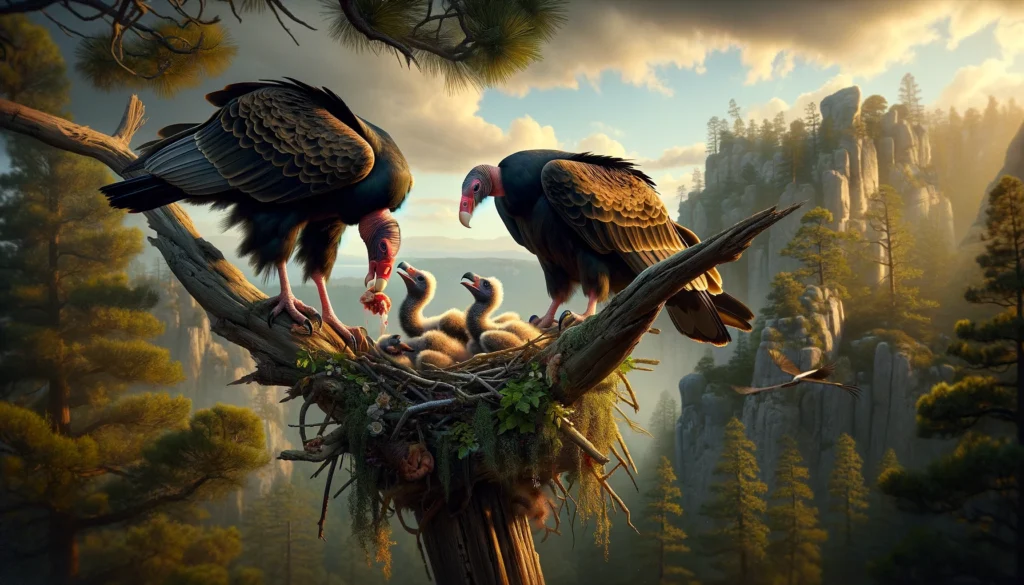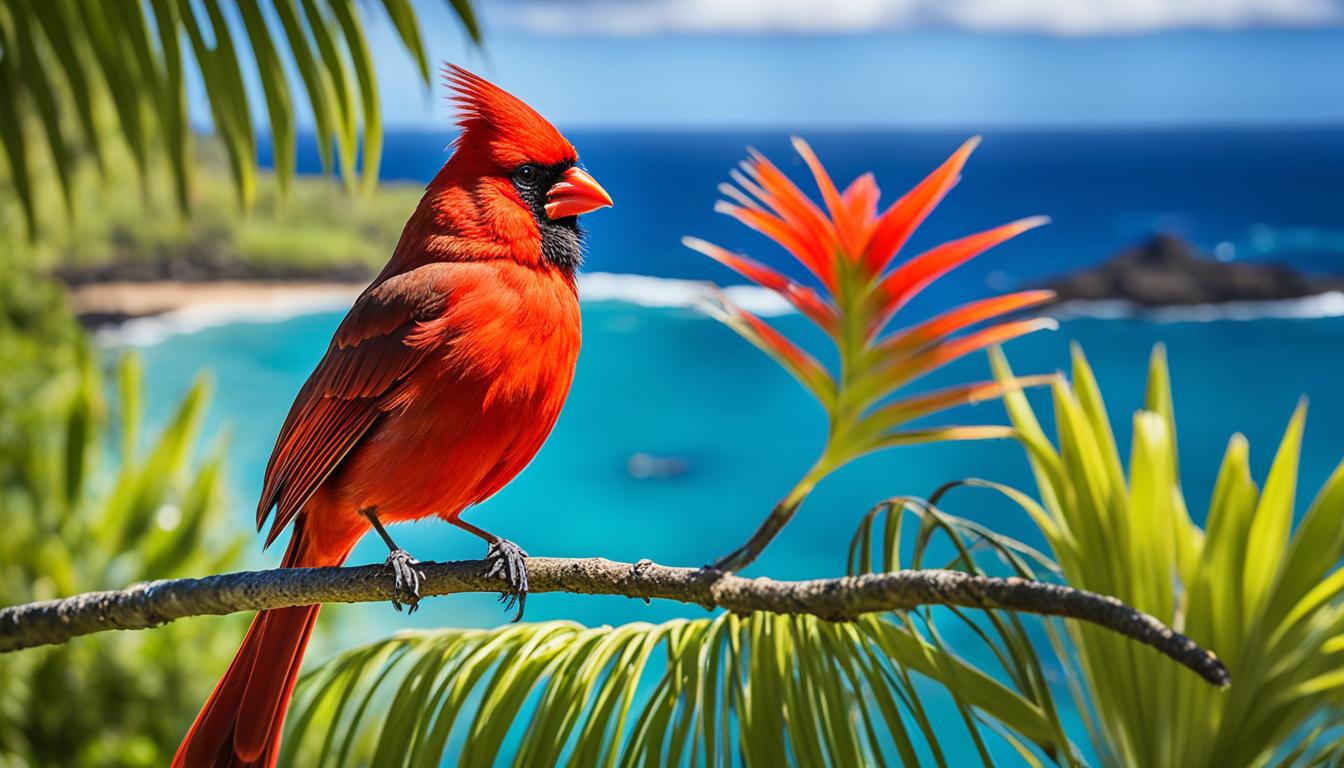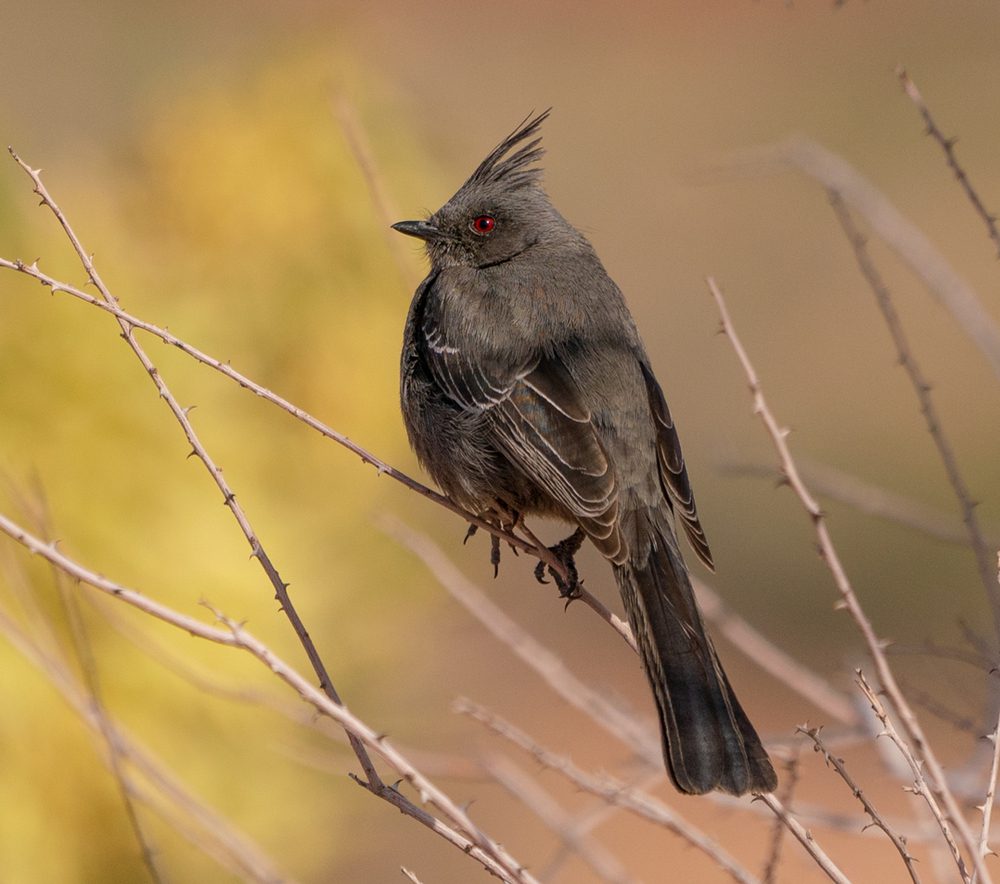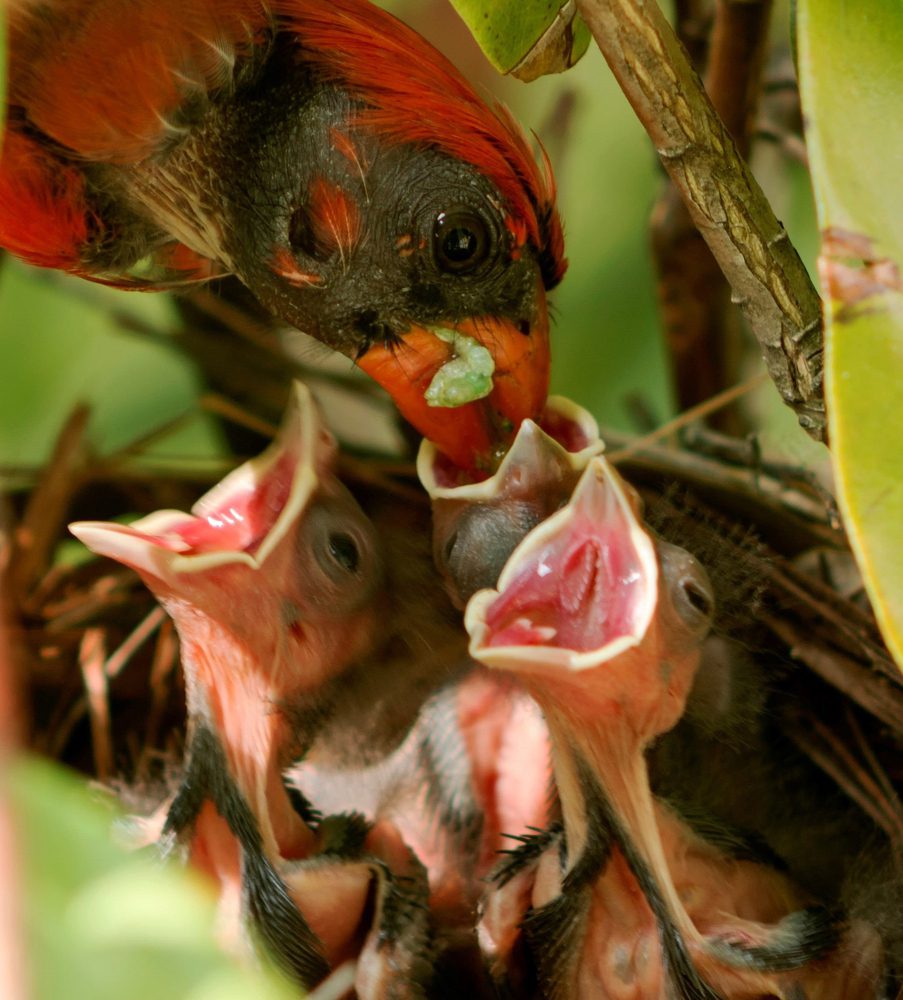Did you know that turkey vultures are not only visually fascinating but also have a distinctive vocal repertoire that sets them apart from other birds? These scavengers of the sky communicate through a range of sounds, each carrying its own meaning and purpose. In this article, we will delve into the captivating world of turkey vulture sounds, exploring their calls, their importance in the ecosystem, and how they contribute to the enchanting nature soundscape.
Key Takeaways:
- Turkey vultures have unique vocalizations that play a vital role in their communication and social interactions.
- Understanding turkey vulture sounds can enhance bird watching experiences and contribute to bird identification skills.
- Wildlife audio recordings are valuable naturalist resources for studying and appreciating the diverse avian soundscape.
- Exploring turkey vulture vocalizations adds a new dimension to our understanding of these fascinating creatures and their ecological significance.
- By appreciating and preserving the natural soundscape, we can ensure the future generations enjoy the beauty and wonders of our avian companions.
Table of Contents
Understanding Turkey Vulture Behaviors
Turkey vultures exhibit a range of behaviors that are critical to their survival and contribute to their crucial role in the ecosystem. From their scavenger lifestyle to their unique feeding techniques and distinct flight patterns, these birds have adapted distinct behaviors that make them incredibly fascinating to study.
Scavenger Lifestyle
As scavengers, turkey vultures play a vital role in the ecosystem by feeding on carrion, or dead animals. This scavenging behavior helps maintain the balance of nature by preventing the spread of diseases that could arise from decaying carcasses. Their keen sense of smell enables them to locate carrion from high altitudes, allowing them to efficiently locate their next meal.
Feeding Techniques
Turkey vultures have specialized feeding techniques that set them apart from other birds. Instead of using their beaks to tear apart their prey, they rely on their strong, hooked talons to tear through the skin and reach the softer tissues. This feeding approach allows them to access nutrient-rich parts of the carcass that might be unavailable to other scavengers.
Flight Patterns
One of the most remarkable aspects of turkey vulture behavior is their flight pattern. They soar gracefully in circular patterns, taking advantage of thermals and updrafts to effortlessly glide through the air. This energy-saving flight technique allows them to cover vast distances while expending minimal effort.
Flock Behavior
Turkey vultures often exhibit flock behavior, particularly during migration. These birds travel in groups, known as kettles, consisting of dozens or even hundreds of individuals. Flocking together serves several purposes, including increased foraging efficiency and enhanced safety from predators. By working together, turkey vultures can locate food more effectively and share information about potential food sources.
“Turkey vultures have adapted a range of behaviors that make them uniquely suited to their scavenger lifestyle. From their aerial prowess to their cooperative flocking behavior, these birds are truly awe-inspiring to observe.” – Expert Birder
| Behaviors | Description |
|---|---|
| Scavenger Lifestyle | Feeding on carrion to maintain ecological balance and prevent disease spread |
| Feeding Techniques | Using talons to tear into carcasses and accessing nutrient-rich tissues |
| Flight Patterns | Effortlessly soaring in circular patterns to take advantage of thermals and updrafts |
| Flock Behavior | Migrating and foraging in groups for increased efficiency and safety |
Turkey Vultures: Habitats and Adaptations
Turkey vultures are remarkable birds that have demonstrated their adaptability in various habitats, contributing to the overall environmental health. These birds are known to thrive in diverse landscapes, including grasslands, woods, mountains, and even suburban areas.
Their adaptability allows them to play a vital role in maintaining the balance of ecosystems through their scavenger lifestyle. By consuming carrion, they contribute to the decomposition process, preventing the spread of diseases and helping to keep the environment clean.
The adaptability of turkey vultures is further enhanced by their keen sense of smell, which enables them to locate food from great distances. This adaptation allows them to find carrion even in vast and expansive terrains, ensuring their survival in diverse habitats.
It is fascinating to observe how turkey vultures have evolved and adapted to different environments, showcasing their remarkable resilience and versatility. These adaptable birds exemplify the interconnectedness between species and their habitats, emphasizing the importance of preserving diverse landscapes for the overall well-being of our planet.
“The ability of turkey vultures to thrive in diverse habitats is a testament to their remarkable adaptability, and serves as a reminder of the intricate relationship between organisms and their environment.” – Dr. Jane Johnson, Avian Biologist
To gain a deeper understanding of turkey vultures’ diverse habitats and adaptations, let’s explore a table that highlights their unique features in various ecosystems:
| Features | Grasslands | Woods | Mountains | Suburban Areas |
|---|---|---|---|---|
| Food Source | Carrion from small mammals | Carrion from both mammals and birds | Carrion from large mammals and reptiles | Carrion from small mammals and birds |
| Nesting Habits | Ground nests in dense grass | Tree nests in hollow trunks | Rock ledges or cliff overhangs | Building ledges and rooftops |
| Flight Patterns | Soaring and circling | Maneuvering between trees | Adapting to high altitudes | Flying low over open areas |
| Adaptations | Sharp beak for tearing flesh | Strong talons for grasping branches | Dense feathers for insulation | Ability to tolerate human presence |
Turkey vultures’ ability to adapt to various landscapes highlights their significance in maintaining the environmental balance. By appreciating the role of these adaptable birds, we can better understand the interconnectedness of all species and the importance of preserving diverse habitats.
The Role of Turkey Vultures in Nature’s Cleanup Crew
Turkey vultures play a vital role in maintaining the ecological balance of their habitats. As nature’s cleanup crew, these remarkable birds have a scavenging behavior that helps prevent the spread of diseases and contributes to the overall health of the environment.
With their keen sense of smell and sharp eyesight, turkey vultures easily locate carrion (dead animals) in their surroundings. They are opportunistic feeders and consume a wide range of carrion, ranging from small rodents to larger mammals and even birds and reptiles. This diverse diet ensures that no decomposing matter goes to waste, effectively reducing the potential spread of diseases.
By efficiently removing carcasses from the environment, turkey vultures prevent the buildup of decaying matter that could otherwise attract disease-carrying insects and scavengers. This scavenging behavior is not only beneficial in terms of disease prevention but also plays a crucial role in nutrient recycling within the ecosystem.
Turkey vultures’ unique adaptations further enhance their ability to fulfill their ecological role. Their bald heads and specialized digestive systems allow them to consume carrion that may contain harmful bacteria, viruses, and toxins without getting sick. By doing so, they not only cleanse the environment but also contribute to disease control by limiting the lifespan of potential pathogens.
“Turkey vultures’ scavenging behavior is nature’s way of maintaining a balance in the ecosystem. Their actions help keep the environment clean and reduce the risk of disease transmission.”
– Wildlife Biologist Jane Adams
The ecological importance of turkey vultures cannot be overstated. Their role as nature’s cleanup crew ensures that carrion is efficiently utilized, preventing the accumulation of decaying matter and reducing the risk of disease outbreaks. By consuming carcasses, turkey vultures contribute to the overall ecological balance and promote a healthy environment for all living organisms.
Nutrient Recycling and Ecological Balance
Through their scavenging activities, turkey vultures play a significant role in nutrient recycling within the ecosystem. After consuming carrion, they break down the organic matter and release important nutrients back into the environment. This nutrient cycling process enriches the soil, benefiting plants and other organisms in the food chain. Furthermore, by feeding on carrion, turkey vultures also prevent the overgrowth of scavenger populations, maintaining a delicate ecological balance.
Disease Prevention and Control
The scavenging behavior of turkey vultures serves an essential role in disease prevention and control. By removing carrion from the environment, they limit the spread of pathogens that may be present in decaying carcasses. This helps protect both wildlife and human populations from the transmission of diseases. Additionally, turkey vultures’ unique immune system adaptations enable them to consume potentially harmful pathogens without falling ill, thus further reducing the risk of disease outbreak.
Conservation Implications
Recognizing the crucial role of turkey vultures in maintaining ecological balance and disease control is vital for their conservation. Protecting their habitats, ensuring the availability of carrion as a food source, and minimizing human disturbances in nesting areas are necessary steps in preserving these incredible birds and their contributions to the environment.

| Turkey Vulture Diet | Scavenging Behavior | Disease Prevention | Ecological Balance |
|---|---|---|---|
| Varied carrion sources, ranging from rodents to large mammals. | Keen sense of smell and eyesight for locating carrion. | Removal of carrion reduces disease transmission and helps control pathogens. | Nutrient recycling, maintaining a delicate ecological balance. |
| Efficient decomposition of carrion, contributing to nutrient cycling. | Opportunistic feeders that utilize available carrion resources. | Immune system adaptations enable consumption of potential pathogens. | Prevention of scavenger overgrowth, promoting equilibrium in the ecosystem. |
Turkey Vulture Nesting Habits and Locations
When it comes to nesting, turkey vultures have specific preferences. These remarkable birds choose ground nests in sheltered areas such as hollow logs, dense thickets, or deserted burrows. This unique nesting behavior ensures their young are well-protected and hidden from predators.
During the nesting period, which lasts for about ten weeks, both the male and female turkey vultures participate in nurturing and feeding their offspring. This shared responsibility showcases their cooperative nature and emphasizes their dedication as parents.
However, the nesting habitats of turkey vultures are facing significant threats due to human activities. The rapid development and habitat destruction caused by human impact have resulted in the loss of suitable breeding sites for these birds.
Conservation efforts are now crucial in order to preserve the nesting habitats and protect the future of these magnificent creatures. By raising awareness about the importance of turkey vultures and implementing effective conservation strategies, we can ensure the survival of their nesting sites and contribute to maintaining a healthy ecosystem.
| Nesting Habits | Breeding Sites | Human Impact | Conservation Efforts |
|---|---|---|---|
| – Ground nests | – Hollow logs | – Rapid development | – Raising awareness |
| – Sheltered areas | – Dense thickets | – Habitat destruction | – Implementing strategies |
| – Sharing parental responsibilities | – Deserted burrows | – Loss of suitable sites | – Protecting nesting sites |
Turkey Vulture Breeding Cycle
Turkey vultures engage in intriguing breeding habits that showcase their unique characteristics and commitment to their offspring. From mate selection to courtship displays and nesting behaviors, these birds demonstrate a remarkable level of dedication in building and maintaining their families.
Mate Selection and Courtship Displays
When it comes to mate selection, Turkey vultures rely on visual displays to attract potential partners. Males engage in spectacular aerial performances, soaring high in the sky while performing impressive gliding maneuvers. These displays not only showcase their agility but also serve as a means of communication to signal their availability and fitness to prospective mates. Females observe these displays and select the most suitable partner based on their performance and physical characteristics.
Nesting Behaviors
After mate selection, Turkey vultures establish their nests in remote areas, such as rock ledges or caves. These secluded locations provide the necessary protection and security for raising their young. Both parents actively participate in the nesting process, collaborating to construct a solid nest made of twigs, leaves, and other available materials. The purposeful selection and preparation of the nest demonstrate their commitment to providing a safe environment for their offspring.
Offspring Care
Once the nest is ready, the female lays one to three eggs, which both parents diligently incubate for around 30 to 40 days. During this period, they take turns sitting on the eggs, ensuring optimal conditions for their development. After hatching, the parents continue to provide attentive care to the chicks. They regurgitate partially digested food to feed their young, nourishing them with vital nutrients for growth. The parents’ devotion and cooperation in nurturing and protecting their offspring highlight the strong family bonds among Turkey vultures.

| Breeding Habits | Mate Selection | Courtship Displays | Nesting | Offspring Care |
|---|---|---|---|---|
| Turkey vultures rely on visual displays to attract mates. | Males perform aerial acrobatics to demonstrate their fitness. | Secluded areas like rock ledges or caves are preferred for nesting. | Both parents actively participate in nest-building. | Parents take turns incubating eggs and feeding the offspring. |
Conclusion
Turkey vultures are remarkable birds that play a crucial role in our ecosystem. Understanding their ecological importance and taking action for their conservation is essential to ensure their survival for future generations. These fascinating creatures contribute to the preservation of our environment in significant ways.
Conservation efforts for turkey vultures are imperative to maintain the delicate balance of nature. By protecting their habitats and raising awareness about their ecological contributions, we can actively participate in their preservation. Their ability to efficiently clean up carrion helps prevent the spread of diseases and promotes a healthy environment.
We must recognize the value of these magnificent birds and support initiatives that aim to conserve their populations. By appreciating their unique calls, behaviors, and adaptability, we can foster a deeper connection with the natural world. Through our collective efforts, we can safeguard these beautiful creatures and ensure their continued existence.





